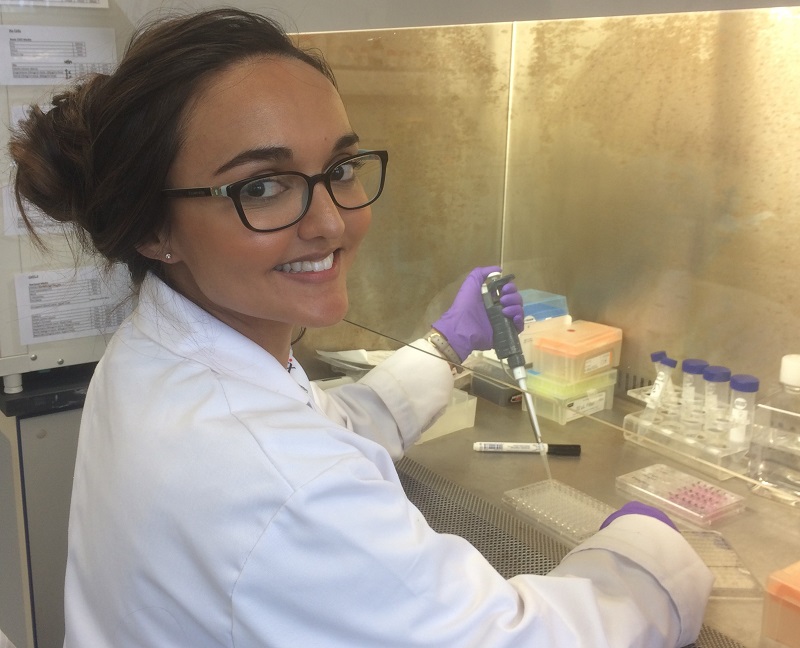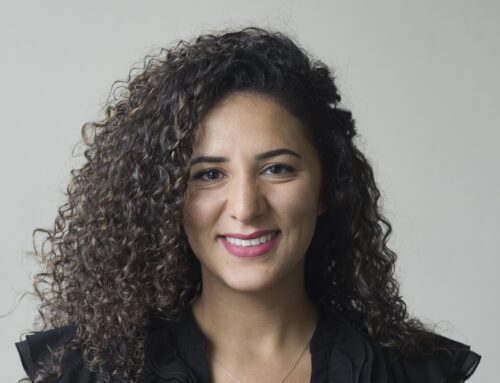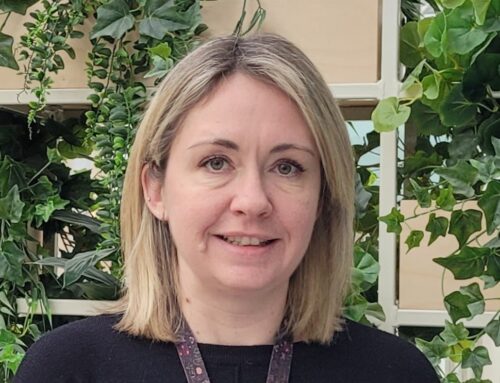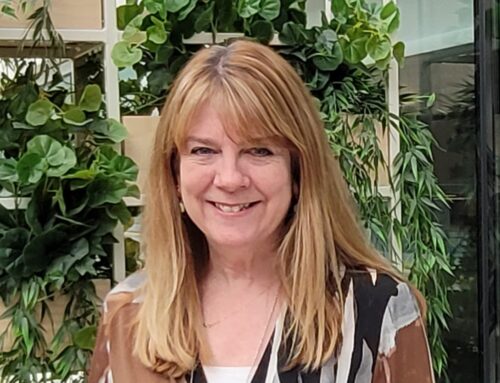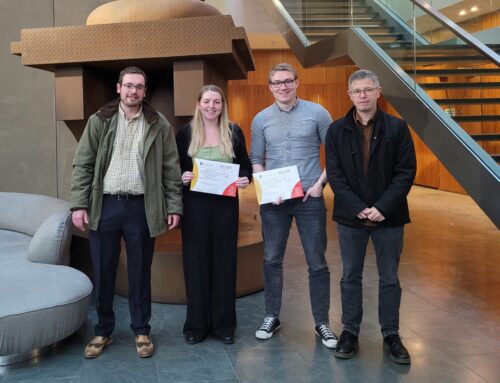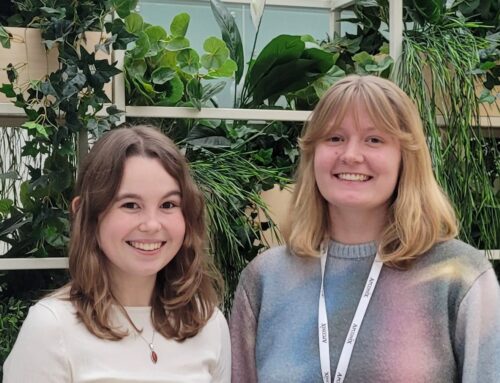Dr Kimberly Rockley’s First Six Months at ApconiX
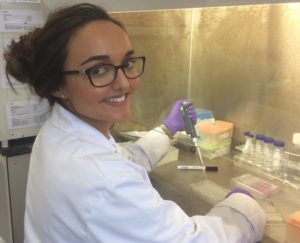
Kimberly Rockley completed her PhD in the Division of Pharmacy at Durham University before joining us at ApconiX in June last year. Here she reflects on her first 6 months with the company.
“Having gained a background in cancer biology, toxicology and in vitro research techniques from my Master’s degree and PhD research I was keen to continue working in this area of science. Ideally, I wanted a role in a commercial environment where I could see defined research goals, research outputs, and a clear path for the direction of my work.
I was thrilled to have been offered such an interesting and varied role at ApconiX! Throughout the last six months I have had the opportunity to expand my laboratory skills and produce written reports to help clients make important decisions on drug projects. In addition to this I have co-authored a review paper, attended conferences and have been involved in charity work with the company. The varied nature of the role is perfect for me as I am able to use and build on my knowledge of toxicology whilst learning about the different aspects of the company. Variety really is the spice of life.
A highlight of my time at ApconiX has definitely been the opportunity to attend and present at the Gordon Research Conference (GRC) and associated Gordon Research Seminar (GRS, aimed specifically at early career researchers) on Cellular and Molecular Mechanisms of Toxicity (CMMT). The conference took place in Boston, USA in August last year and I was able to attend with the help of a EUROTOX travel fellowship award.
My poster abstract based on my doctoral research was initially selected for oral presentation at the GRS, but then the cherry on top was being awarded the “Best Post Doc Talk” prize leading to a presentation slot on the podium at the main GRC! This was a fantastic (and also slightly scary!) experience, and I would certainly do it all again in a heartbeat! The GRC/GRS is unlike any conference I have attended before – there is specific time for activities such as yoga and lake swimming, and the GRS provides a rare opportunity to network with other early career researchers from different backgrounds in a relaxed environment and learn about their work. The GRC ended with a lobster dinner, dancing and campfire. It was a lovely end to a great conference, and I hope to go again to the next GRC/GRS in 2021.
In the electrophysiology laboratory I have helped with the development of our new sodium channel screening panel. This involved testing the ability of drugs with known effects on sodium channels to block the sodium channel subtypes NaV1.1, 1.2, 1.4, 1.5, 1.6 and 1.7 using automated patch clamp techniques. It is important that potential new therapies are screened for their ability to block sodium channels – due to the crucial roles of sodium channel subtypes in the body, inhibition can cause unwanted side effects such as arrhythmias and seizure.
Comparable to screening for blockade of the hERG potassium channel early in drug development to reduce cardiac safety liabilities, sodium channel screening also provides the opportunity to screen-out any potential toxicities before new drug candidates progress further into the drug development process. This was my first try at automated patch clamp and I have learned that although the technique it is not as difficult to perform as it looks, it can produce an enormous amount of data! After a serious test of my data analysis skills, aspects of this work were presented on a poster at the ELRIG conference held in Liverpool in November last year. The poster was entitled sodium channel selectivity of three anti-epileptic drugs and showcased the activity of carbamazepine, lamotrigine and phenytoin against the 6 sodium channel subtypes.
In the area of seizure, I was thrilled to conduct a pilot study using the Axion Maestro Pro multielectrode array (MEA) system and Ncardia iPSC-derived neuronal cells in October last year. With help from Jayne Ingram from Axion Biosystems we determined the spontaneous electrical activity of the cells and recorded the occurrence of seizurogenic signals following addition of drugs with a known seizure risk. We were also keen to see if the addition of an anti-epileptic drug could decrease electrical activity, and the results were all round very promising. The pilot study was conducted in preparation for a larger program of study in the exciting area of seizure liability. This research will use the Axion MEA system to tease out the ion channels implicated in seizure and culminate in the creation of an ion channel panel for earlier detection of seizure liability.
This is an important piece of research as toxicity to the central nervous system, including seizures, are the most frequent cause of safety failure in the clinical phase of drug development. Akin to the success of screening against a panel of ion channels such as hERG to reduce cardiovascular safety liabilities, successful implementation of an ion channel seizure panel would provide a rapid and reliable method for in vitro detection of seizure. In October last year we published a review article entitled ‘Innovative models for in vitro detection of seizure’ outlining our innovative approach to improved detection of seizure liability.
With the support of my colleagues I have also started to assist in producing target safety assessments (TSAs) for our growing list of clients. The purpose of these reports is to provide an analysis of the potential safety risks associated with a specific target or pathway. Using relevant information obtained from literature searches and other publicly available databases we present the potential safety risks and propose mitigation plans for the next steps. TSAs offer a solid foundation at the beginning of new drug projects and provide information that can help guide the design and interpretation of both nonclinical and clinical studies. I have found constructing TSAs to be an excellent learning experience with respect to learning more about toxicology in drug development, and the techniques and models that are currently used to assess drug toxicity in different organs.
One of great things about working at ApconiX is all the other people who work here. There are approximately 20 members within the ApconiX team, and that number is constantly growing. I have now met most of the team (some only work abroad) and they are some of the best in their respective fields of nonclinical safety with a wealth of experience. We have specialists in many areas including DMPK, reproductive toxicology and nonclinical study monitoring, to name just a few. Just chatting to the team when they are around has allowed me to become more informed about the role of toxicology within drug development, how important it is to consider drug safety early in the drug development process, and the regulatory procedures and guidelines associated with a new drug progressing to phase I clinical trials. In addition to the team we also host placement students and have employees who work in the areas of marketing, finance and in the laboratory. All of this makes for a very friendly, relaxed and collaborative environment – which is probably the thing that I love most about working at ApconiX. Whether you need to know where to find specific information, advice on the best way to approach a new task, or some feedback on your work, there is always someone who can help.
The friendly and collaborative environment at ApconiX has been instilled by the company directors Ruth, Richard and Mike. From daily interactions with the directors in the office it is clear that they are all very passionate and skilled at what they do, whilst being seriously laid back and fun to be around. Since starting at ApconiX I have received plenty of support and encouragement from all the directors, with emphasis on developing both my scientific and personal skills. All the people in the team at ApconiX make the company a motivating, happy and fun place to work.
To round up 2019 we sang Christmas carols and raffled an impressive ApconiX created Christmas hamper in support of Macmillan Cancer Support, enjoyed our team Christmas meal and I represented the company at the Bionow 2019 awards dinner.
In addition to being part of a fantastic team, I am also fortunate to be based on fantastic site. Alderley Park is a lovely place to work, hosting a diverse array of scientific companies, coffee shops and the Mereside restaurant. There are also a number of initiatives from the Alderley Park team aimed at both professional and personal development. I have attended project management workshops, lunchtime scientific seminars and networking events such as coffee mornings. These events are open to everyone that works on-site and so adds to the collaborative and friendly feel of working here.
In my first six months at ApconiX I have learned a great deal about how the company works and the significance of nonclinical toxicology and drug safety throughout drug development. I feel that I have settled in well to my new role and have contributed to the growth of the company. It has been a fabulous experience so far and I am really enjoying my time here. I am excited to see what the future will bring at ApconiX, and ready to face the new challenges that lie ahead in 2020!”.

